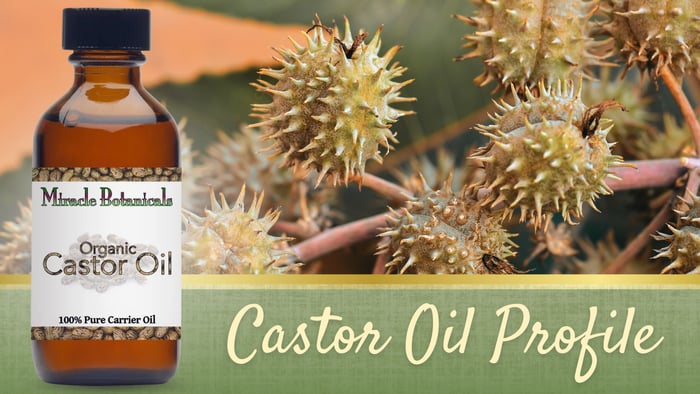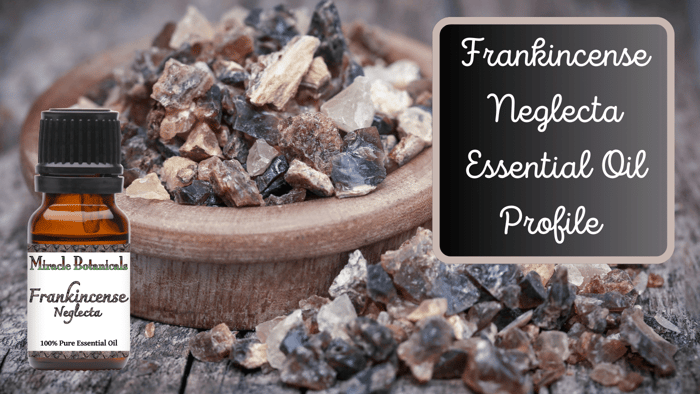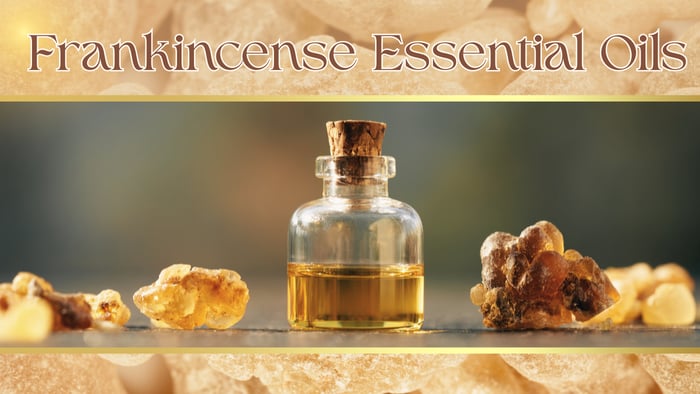The Science Behind Castor Oil: How This Remedy Actually Works
For thousands of years, castor oil has been revered as a healing powerhouse — used by ancient Egyptians for everything from lamp fuel to laxatives, and by traditional healers across cultures for promoting hair growth and soothing inflamed skin. But what makes this thick, golden oil so remarkably effective? The answer lies in its unique chemical composition and the fascinating ways it interacts with our bodies at a cellular level.
What Makes Castor Oil Different
Our Castor oil is virgin cold-pressed from the seeds of Ricinus communis, a plant native to tropical regions of Africa and India. Unlike most plant oils, which contain a mix of fatty acids, castor oil is composed of approximately 90% ricinoleic acid — a rare omega-9 fatty acid that's responsible for most of castor oil's therapeutic properties.
This unusually high concentration of a single fatty acid is what sets castor oil apart from other carrier oils and gives it its characteristic viscosity and healing abilities. But the real magic happens when ricinoleic acid interacts with our skin, hair follicles, and internal systems.
The Ricinoleic Acid Advantage
Ricinoleic acid is an 18-carbon fatty acid with a hydroxyl group (OH) on the 12th carbon. This unique molecular structure allows it to act as both a humectant (drawing moisture to the skin) and an emollient (sealing that moisture in). But its benefits go far beyond simple hydration.
Anti-Inflammatory Mechanisms
Research has shown that ricinoleic acid exhibits potent anti-inflammatory properties by inhibiting several inflammatory pathways in the body. When applied topically, it reduces the production of pro-inflammatory cytokines and prostaglandins — the chemical messengers that trigger swelling, redness, and pain.
A study published in Mediators of Inflammation found that ricinoleic acid suppresses the activity of enzymes like COX-2 and 5-LOX, which are involved in inflammatory responses. This makes castor oil particularly effective for conditions like acne, eczema, psoriasis, and other inflammatory skin conditions.
Antimicrobial Properties
Ricinoleic acid also demonstrates natural antimicrobial activity against various bacteria and fungi. Research has shown it's effective against common skin pathogens including Staphylococcus aureus and Candida albicans. This antimicrobial action helps explain why castor oil has been traditionally used for wound healing and treating skin infections.
The mechanism appears to involve disrupting the cell membranes of harmful microorganisms while leaving beneficial skin flora largely intact — a gentler approach than many synthetic antimicrobials.
Castor Oil - Organic (Ricinus Communis)

$19.00
Botanical Name: Ricinus Communis Plant Part: Beans Method of Extraction: Cold Pressed Country of Origin: India Color/Consistency: Clear Color With Thick and Sticky Consistency … read more
Stimulating Circulation: The Hair Growth Connection
One of castor oil's most celebrated benefits is its ability to promote hair growth, and science is beginning to catch up with traditional wisdom on this front.
The Prostaglandin Connection
When massaged into the scalp, castor oil's ricinoleic acid is believed to increase prostaglandin E2 (PGE2) receptors in hair follicles. PGE2 is a signaling molecule that plays a crucial role in hair growth cycles, helping to prolong the anagen (growth) phase of the hair cycle.
While large-scale clinical trials are still needed, preliminary research and extensive anecdotal evidence suggest that this prostaglandin-boosting effect can help:
- Stimulate dormant hair follicles
- Increase hair thickness and density
- Reduce hair breakage
- Promote eyebrow and eyelash growth
Enhanced Blood Flow
Castor oil is also known for its ability to stimulate circulation when applied topically. The slight warming sensation many people experience when using castor oil isn't imaginary — ricinoleic acid promotes vasodilation (widening of blood vessels), increasing blood flow to the area.
This enhanced circulation delivers more oxygen and nutrients to hair follicles and skin cells, supporting healthier growth and faster healing. The increased blood flow also helps carry away metabolic waste products and inflammatory compounds, further supporting the body's natural healing processes.
Castor Oil Packs: Therapeutic Circulation
The circulation-boosting properties of castor oil are magnified when used in castor oil packs — a traditional therapy where oil-soaked cloth is applied to the skin, often with heat. These packs have been used in holistic medicine to:
- Stimulate lymphatic drainage and detoxification
- Reduce inflammation in joints and muscles
- Support liver function
- Relieve menstrual cramping and digestive discomfort
- Promote healing of injuries and surgical scars
The combination of ricinoleic acid absorption and sustained warmth creates a powerful circulatory effect that can influence tissues deep beneath the skin's surface.
Traditional Use in Labor
Historically, castor oil has been used by midwives and in hospital settings to help induce labor in full-term pregnancies. When taken orally, it stimulates intestinal contractions that may trigger uterine contractions through prostaglandin release and increased pelvic circulation.
Important note: This use should only be done under the guidance and supervision of a qualified healthcare provider. Self-administration of castor oil during pregnancy can lead to complications including severe dehydration, electrolyte imbalances, and fetal distress. Never use castor oil to induce labor without explicit medical direction.
Circulation Benefits Beyond Hair and Skin
The vasodilating effects of castor oil make it valuable for:
- Athletic recovery: Massaged into sore muscles to speed healing
- Joint health: Applied to arthritic joints to reduce stiffness
- Wound healing: Increased blood flow accelerates tissue repair
- Cold extremities: Improves circulation in hands and feet when massaged regularly
It's one reason why castor oil packs and topical applications have remained popular across diverse healing traditions — the fundamental mechanism of improved circulation has wide-ranging therapeutic applications.
Penetration and Absorption
Castor oil's molecular weight and structure allow it to penetrate deeply into the skin — much more so than many other carrier oils. Studies using various imaging techniques have shown that castor oil can reach the deeper layers of the dermis, where it can influence collagen production and cellular repair processes.
This deep penetration is particularly beneficial for:
- Reducing the appearance of scars and stretch marks
- Treating deep cystic acne
- Nourishing hair follicles from within
- Supporting lymphatic drainage (when used in massage)
The Gut-Skin Connection
Castor oil has been used as a natural laxative for centuries, and this internal use may indirectly benefit skin health through an interesting mechanism.
When ingested in small amounts, ricinoleic acid acts on intestinal receptors, increasing smooth muscle contractions and promoting bowel movements. While this traditional use should be approached with caution and proper guidance, some practitioners believe that castor oil's ability to support detoxification and reduce inflammation systemically can lead to clearer skin and improved overall wellness.
The gut-skin axis is an area of growing research, and reducing systemic inflammation through various means — including supporting healthy digestion — may indeed reflect positively on skin appearance.
Antioxidant Activity
Beyond ricinoleic acid, castor oil contains vitamin E, minerals, and other beneficial compounds that provide antioxidant protection. These antioxidants help neutralize free radicals — unstable molecules that damage skin cells and accelerate aging.
Regular application of castor oil may help:
- Reduce oxidative stress in skin cells
- Prevent premature aging signs like fine lines and wrinkles
- Protect against environmental damage from UV rays and pollution
- Support the skin's natural repair processes
How to Harness the Science
Understanding how castor oil works helps us use it more effectively:
For hair growth: Use 1-2 tablespoons (depending on hair length and thickness). Massage into the scalp for 5-10 minutes to maximize circulation-boosting effects. The mechanical massage combined with ricinoleic acid's properties creates optimal conditions for follicle stimulation. Leave on for at least 30 minutes or overnight, then shampoo out.
For inflammation: Apply a generous layer (about 1-2 teaspoons for a localized area) to clean skin and allow time for deep penetration. For enhanced results, place a warm cloth over the applied oil to help drive it deeper into tissues and amplify the anti-inflammatory effects. The anti-inflammatory effects are dose-dependent, meaning consistent use yields better results.
For castor oil packs: Saturate a piece of flannel cloth (approximately 12"x12") with 2-4 tablespoons of castor oil. Apply to the affected area, cover with plastic wrap, then place a heating pad or hot water bottle on top. Leave on for 30-60 minutes.
For scar treatment: Use just a few drops (3-5) for small scars, massaging gently in circular motions. Mix with other carrier oils (1:1 or 1:2 ratio) to improve spreadability, and apply nightly. The deep penetration and collagen-supporting properties work best with regular, long-term use.
For skin conditions: Use as a spot treatment (1-2 drops per blemish) or add 1 teaspoon to 2 tablespoons of a lighter carrier oil for broader application. The antimicrobial and anti-inflammatory properties work synergistically when left on the skin.
For lashes and brows: 1 drop per eye area is sufficient. Apply with a clean mascara wand or fingertip before bed.
The Bottom Line
Castor oil isn't just another folk remedy that happens to work — it's a scientifically fascinating plant with unique molecular properties that translate to real therapeutic benefits. Its high ricinoleic acid content, combined with its ability to penetrate deeply, stimulate circulation, reduce inflammation, and fight harmful microorganisms, makes it one of nature's most versatile healing oils.
Unlike many hyped natural remedies, castor oil has both historical use and growing scientific evidence to back up its reputation. Its unique chemical composition — particularly that 90% ricinoleic acid content — gives it properties that other carrier oils simply don't have. For anyone interested in natural approaches to hair growth, skin healing, or inflammation reduction, castor oil offers a well-documented option worth exploring.





